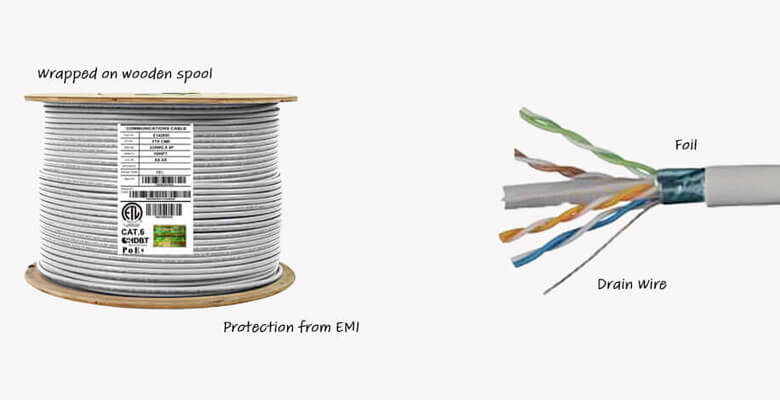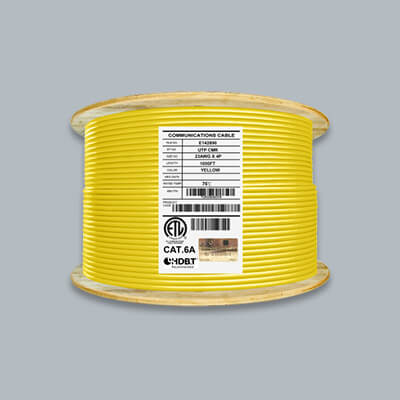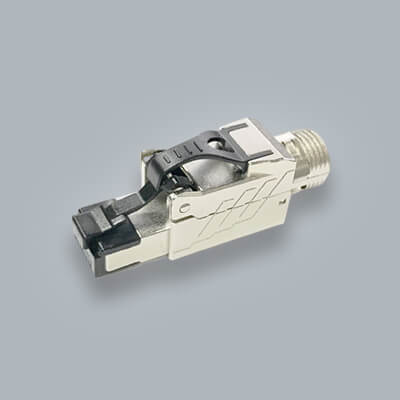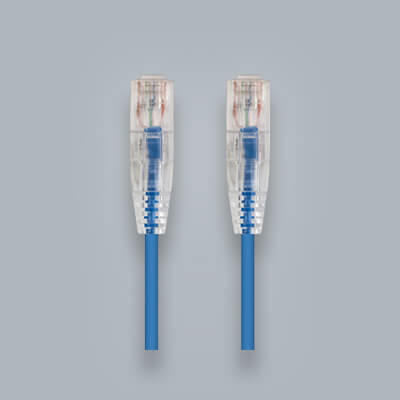Shielded Cable: Everything You Need to Know

Knowing your surrounding areas when installing ethernet cable can help in your purchasing decision. With the many types and categories of ethernet cables its important to know when and where to use each kind. Some of the most popular cables in use today are unshielded ethernet cables. These are commonly used in residential and business installations. For the most part these types of cables are going to be able to do the job but sometimes you may need or want extra protection with your cable. The common requirement for extra protection in your ethernet cable is when there is EMI in the area. Briefly, EMI is a signal interference. Well get more into that later. Instead of unshielded cable in this case you are going to want shielded cable. Shielded cable has many types and layers to it so its important to understand its uses, benefits and characteristics.
What is a Cable Shield?
A shielding in cable is a metallic covering or envelope closing the insulated conductors, individual groups of conductors within a core or just the cable core.
Shields are commonly made with foil or braided metal strands. They are often tinned copper, bare copper, aluminum or other electrical conductive material. But for the most part you will see them with foil and or braids in networking cable.
Benefits of Shielded Cable
To achieve the benefits of shielded ethernet cable its first important to have your cable properly terminated, bonded and grounded. Another term you might see for grounded is earthed. When this is done you can expect shielding to:
- Decrease the radiated signal from the cable
- Decrease the effects of electrical hazards
- Limit the effect of external EMI on the conductors within the shielded cable
Shielded Cables Success
Having your ethernet cable succeed in its environment depends on many different factors. As we mentioned earlier having your cable properly set up is key in its overall success but what also is important in the cable is the shield itself. Apart from proper terminations the shield's effectiveness has factors you need to keep in mind:
- The type and thickness of the shield material
- The number and size of openings in the shield
- The effectiveness of the bonding connection to the ground
To touch on these more its important to understand the types of shielding (which we will cover in just a bit) and the thickness of the shield. The more shielding in a shielding cable the better. You'll notice that in higher category cables where high frequencies need to be achieved that they have multiple layers of shielding to help get to these higher frequencies. The multiple layers help increase the shielding thickness.
The number and size of openings in the cable shield is another factor to keep in mind. Dual layer shields often seen in higher category cables have a layer of foil and then a layer of braid on top of that. The number of openings in these shields will affect the overall performance of the shield in the cable. Braids because the way they are created will have openings along its structure and that is ok as it acts as the second layer. You want to look for the amount of coverage when it comes to the braid on your cable. It's important to get a cable with good coverage on the shield and braid if they have both. For the first layer which is usually the foil layer you want no openings in the foil. Any cracks in the cables shield will also affect the performance. The signal can leak out of any openings in the shield if there are any cracks or holes. This is why its important to get shielded cable on a spool for installations. Cable on a spool has a more even cable lay and deployment. Pulling a shielded cable from a pull box can cause cracks in the cables shield which can reduce any benefits that you get from the shielded cable in the first place.

Shield Types
Some shield types you can see are:
- Braided Wire
- Spiral
- Reverse Spiral
- Metal Foils (Spiral or Running Lengthwise)
- Combination of both
- Metal Tubes
- Conductive nonmetallic materials
What's the best Shield for Cable?
With all the different types of ethernet cable shielded and structures you might be surprised to know that the best shield for cable is actually a metal tube. A metal tube will often be referred to as conduit. The conduit in this case being the metal tube. It's shown to be very effective at shielding your cable at all frequencies. Metal conduit is used and can be seen in some scenarios but because of its firmness and strength its most likely too difficult to use in most installations. This is where the shielded cable comes in to play.
When to Choose a Shielded Cable?
Let's now get into when to choose a shielded cable. Maybe you just want the extra protection from EMI or because your cable is built for higher frequencies you might have to have a shielded cable. Some of these scenarios can help when deciding to use a shielded cable:
- The area is an EM field where the cable will run. You can measure these areas in volts per meter
- EMC regulations need to be met. A cable operating in a system that must be designed to conform to EMC radiation limits of that system
- The physical environment and mechanical requirements in which the shields would have to be added to support the cable
- Areas containing Radio transmitters/receivers, electrical power lines, radar, engines, electric motors, electronic ballasts and broadcasting towers.
- Doctors offices, Hospitals, Laboratories or factories.
Conclusion
Shielded cable is a great tool against EMI or any signal interference in your network. They come in many different types and you should be able to get the right one for your specific need. For the most part if you are running Cat5e to Cat6A cable in your home then unshielded cable will be fine for your network. If you happen to live close or are running next to power then it might be worth looking into a shielded cable. It's important to know as well that if you are using a shielded cable that the whole channel should be shielded. This includes the keystone jacks and RJ45 connectors. This ensures that your cable run gets the full benefits of the shielding. Higher rated categories such as Cat7A cable and Cat8 cable will all come with shielding to help achieve such high frequencies. As always any more questions on this topic please contact us and we'll be glad to assist.






Dear we ask about shielded low voltage cable that to reduce acoustic noise arising when using variable frequency driver to derive pump mitor